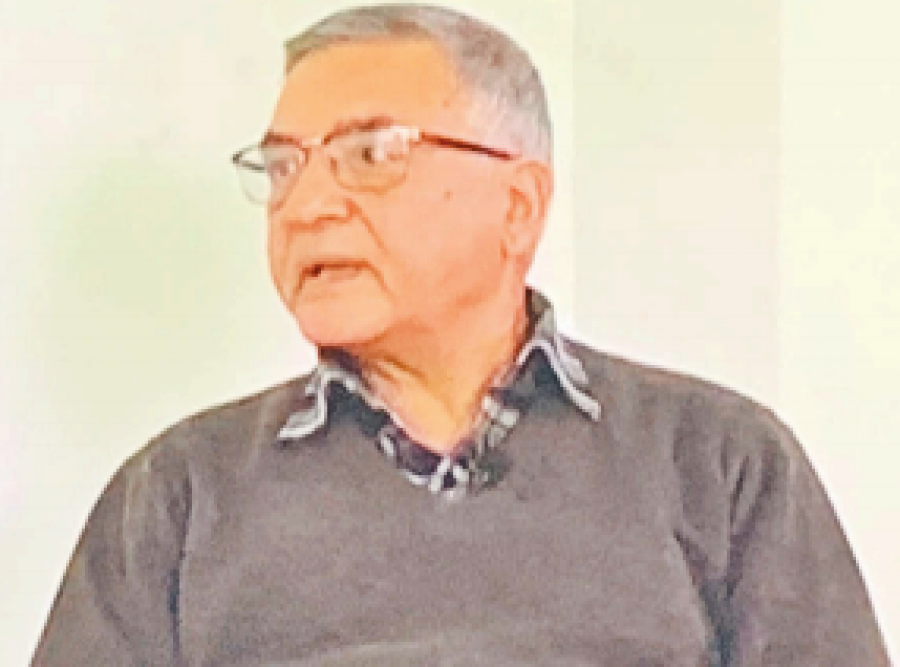Economist Keshav Prasad Acharya, who has been working in Nepal Rastra Bank for more than 30 years, was the head of the Economic Research Department when he retired as the executive director of the bank in 2008. Acharya, who holds a master’s degree in economics from Tribhuvan University and a master’s degree in economics from the School of Economics of the University of the Philippines, was a senior adviser to the Ministry of Finance twice in 1994-95 and 2009-2011. An edited excerpt from Taksar’s conversation with Acharya, currently a senior advisor at the Economic Policy Incubator (EPI):
Looking at the glasses of an economist, where is the contemporary Nepali economy going? Nepal’s economy should go through which stage and where did it get stuck? What are the factors of the existing economic problems?
First, where did our economy go? Tsciallando nike ads 2018 haibike sduro fullseven lt 4.0 2019 nike ads 2018 doudoune ultra légère homme gucci gg0061s 003 Chile cascos de moto para niños zapatos adidas altos para mujer yeezy x prada nike sunray protect 37 deebo samuel jersey prs sc 250 veste moto toute saison amazon deebo samuel jersey veste moto toute saison amazono understand where we are, one must refer to Nobel Prize winning economist Theodor Sulz’s first world economic history book. During economic development, he believed that the foundation of economic growth of every country – except for the urban states like Vatican City, Singapore – starts with the agricultural revolution. And, industrialization begins with the agricultural revolution. Then when additional production starts, service sectors come for it.
In our case, without the full development of agriculture, it was transformed into services at once. Looking at the course of economic development since the past, liberalization was done in 2049, after adopting the policies of open market economy, privatization, etc., the economic growth has picked up a bit. As far as I can see, the fastest economic growth rate was seen when Indra Kumar Gujral was the Prime Minister of India until the Nepal India Trade Treaty in 1996 when the Maoist movement reached its peak.
If we look at what drove the growth rate, it was seen that there was neither qualitative growth in agriculture, nor expansion of industry.
The productivity of rice in our agriculture is less than three metric tons per hectare, which is less than other countries. Agriculture is still the basis of the economy. Agriculture has a share of 26 percent in the Gross Domestic Product (GDP), followed by wholesale and retail trade, which is always the second 15-16 percent, real estate in the third, nine percent and education in the fourth, eight percent of the GDP. We neither modernized agriculture nor provided irrigation facilities nor mechanized it in the last 6 decades.
The share of real estate has increased without doing anything. In fact, the share of education in the manufacturing sector, hydropower, construction sector, it was seen that it suddenly increased from the middle, which should grow only by being strong.
In a country with a small economy like Nepal, where 54 percent of the total size of the economy is occupied by the informal economy, we are talking about structural changes, how realistic is that? How can the models we project for the development of our economy work properly?
If we want to see how our informal economy is, in the first eight months of the current financial year, more than 32 billion worth of gold has been imported, and that too is informal. Palm oil, soybean oil, sunflower oil are imported and sent to India. Although it is seen in the figure of export, it is also unofficial. The way in which our imports are being underinvoiced and the amount that comes from it is also unofficial. But especially in the informal economy, productivity is very low. The productivity of workers is very low. There should be no value added in the economy. Not only the worker but the entrepreneur also has a very low productivity. Therefore, this informal economy brings distortions, firstly, secondly, the policy interventions that the government tries to make – through taxes, through subsidies, do not reach the target group. It only reaches the upper class.
How can a two-digit economic growth rate come by maintaining such a large informal economy? Half of the economy is informal, where the government has no control. Loans are not enough, grants are not enough. The concessions given by the government are not enough. Therefore, we cannot move ahead with this informal economy. We stay where we are.
Finally, your opinion about the current economic crisis? If not a crisis, what is it?
We have not reached the crisis. But if we can’t manage, if we can’t plan, we will definitely get there. The reason is that the liquidity of the bank seems to have been increasing every year for the last four years and this time it has increased. The trade deficit is also increasing since the beginning of this financial year. Because of this, the current account and the current account deficit have increased. Likewise, remittances are decreasing. The government has concluded labor agreements with many countries. Salaries of workers who have gone to different countries have also increased, while remittances have decreased.
In addition, it was as if the war had added fuel to the fire. It will become more expensive to buy oil as it is now. If we are not able to properly manage all these foreign exchange crisis, price rise, liquidity crisis, we will go into crisis, but there is no need to panic now.
(Taksar Magazine, Baisakh 2079, pages 50 to 56)


